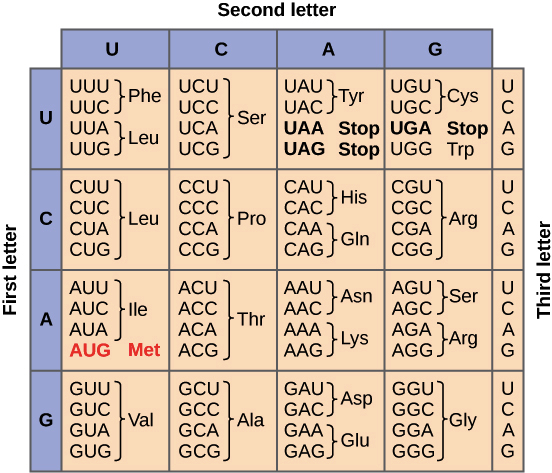what are the 4 macromolecules and what are each made of?
Carbohydrates: monosaccarides
Lipids: fatty acids
Proteins: amino acids
Nucleic acids: nucleotides
What is the central dogma?
dna to rna to protein
replication, transcription, translation
0%
give 2 examples of evidence for evolution
fossil evidence (e.g., transition fossils)
- homologous traits
- vestigial traits
- similarities in genetic sequences (and amino acid coding)
- similarities in development (ontogeny) between different species
- direct observations of natural selection (e.g., antibiotic resistant bacteria)
keystone species
an organism that helps hold the system together.
Do plant cells perform cellular respiration? What is cellular respiration?
Breaking down glucose into ATP, yes using the glucose from photosynthesis.
what direction does the leading strand go to?
5 to 3
3 to 5 if lagging
- Trait expression and transmission is only in males, the individuals with the Y chromosome.
- If a male has a trait, so should his father and paternal grandfather as well as his sons and their sons. It follows the inheritance of the Y chromosome.
Y linked
what is an analogous trait and a homologous trait?
bat wing and human arm (HT)
haploid cell
Haploid describes a cell that contains a single set of chromosomes.
What is photosynthesis and what are the major by products?
process in which plants create their own glucose from sunlight and CO2, creates glucose
the mRNA codon is CAG? what amino acid does this code for?
Gln
- Males and females are equally likely to have the trait.
- There is male to male transmission.
- Traits do not skip generations (generally). If the trait is displayed in offspring, at least one parent must show the trait.
- If parents don’t have the trait, their children should not have the trait (except for situations of gene amplification).
- The trait is present whenever the corresponding gene is present (generally). If both parents possess the trait, but it is absent in any of their offspring, then the parents are both heterozygous (“carriers”) of the recessive allele.
- Homozygotes for the dominant condition have a more severe form of the condition.
autosomal dominant
what are the pros and cons of asexual and sexual reproduction?
AR cons: No variation - if the parent has a genetic disease, offspring does too.
AR pros: Time Efficient; no need to search for mate, requires less energy
SR cons: Requires two organisms, requires more energy
SR pros: Variation, Unique., organism is more protected
hydrogen bond
in chemistry, a hydrogen bond is primarily an electrostatic force of attraction between a hydrogen atom which is covalently bonded to a more electronegative "donor" atom or group
What are the components of the cell membrane?
Phospholipid bilayer, separates the ECM from the CM, responsible for cellular transport etc
what is a point mutation? is it bad?
A point mutation occurs in a genome when a single base pair is added, deleted or changed.
what does it mean to be fit for the environment?
able to survive, an organism's ability to pass its genetic material to its offspring
what are the three stages of cellular respiration?
Glycolysis, Krebs Cycle, Oxidative Phosphorylation
codominance
a type of inheritance in which two versions (alleles) of the same gene are expressed separately to yield different traits in an individual.
Give two examples of similarities and differences between prokaryotes and eukaryotes
Same: Both have ribosomes and DNA
Different: EU are more complex, and have linear DNA
what is the difference between mitosis and meiosis?
include about the stages and cell types
Somatic cells vs gametes
have the same stages, except meiosis is longer
scientist who founded modern genetics
Gregor Mendel
Name three organelles and their function
genotypes
the genetic constitution of an individual organism.